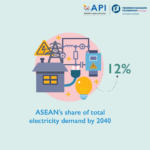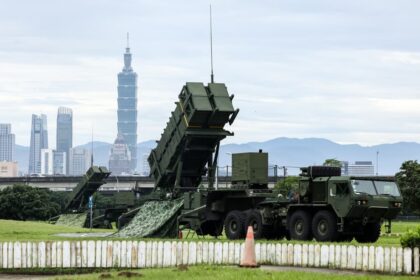Monkey Invasions in Punggol: A Growing Urban Challenge
In recent years, residents of Punggol, a rapidly developing residential district in northeastern Singapore, have found themselves grappling with an unexpected and persistent challenge: repeated invasions by long-tailed macaques. These encounters, once rare, have become a regular feature of daily life for many, prompting concerns about safety, property damage, and the delicate balance between urban development and wildlife conservation.
- Monkey Invasions in Punggol: A Growing Urban Challenge
- Why Are Monkeys Invading Punggol?
- How Are Residents Coping?
- Impact on Businesses and Public Spaces
- Official Response: NParks’ Multi-Pronged Strategy
- Expert Insights: Why Feeding Monkeys Makes Things Worse
- Safety Tips and What to Do During an Encounter
- Broader Implications: Urban Wildlife Management in Singapore
- In Summary
From January to May 2024 alone, the National Parks Board (NParks) received 280 feedback cases related to macaques in Punggol. Residents, food and beverage businesses, and even educational institutions have all reported incidents involving monkeys rummaging through trash, entering homes, and causing disturbances in public spaces. As the community adapts to this new reality, a combination of grassroots vigilance, official intervention, and public education is shaping the response to this complex issue.
Why Are Monkeys Invading Punggol?
The long-tailed macaque, native to Southeast Asia, is a highly adaptable species that thrives in both forested and urban environments. In Singapore, these monkeys are typically found on the fringes of forests, but urban expansion has brought residential developments ever closer to their natural habitats. Punggol, with its proximity to Coney Island Park, Lorong Halus Wetland, and other green spaces, sits at the intersection of these two worlds.
NParks explains that macaques move between forest patches in search of food and territory. As natural food sources become scarcer or as monkeys learn to associate humans with easy meals, they are increasingly venturing into residential areas. The presence of accessible food—whether from uncovered trash bins, food left unattended on outdoor tables, or direct feeding by residents—further encourages this behavior.
Minister for National Development Desmond Lee has highlighted the growing number of human-monkey conflicts in Punggol, noting that urban development and habitat fragmentation are key drivers of these encounters. As Singapore continues to urbanize, such interactions are likely to become more common unless proactive measures are taken.
How Are Residents Coping?
For many Punggol residents, monkey sightings have become a routine part of life. Community chat groups have emerged as vital tools for sharing real-time information about monkey movements, issuing reminders to keep windows closed, and advising on proper waste management. Videos and photos of monkeys climbing building facades, loitering at void decks, and even entering homes circulate widely among neighbors, fostering a sense of collective vigilance.
Some residents have taken more concrete steps to protect their homes. The installation of mesh screens and grilles on windows and balconies is becoming increasingly common, especially among families with young children. Kenneth Gan, who runs a company specializing in insect screens, reports a surge in inquiries from Punggol Northshore flat owners seeking stronger, stainless steel mesh to keep monkeys out. “Quite a number of them have children, so they are concerned about safety,” he notes.
Others have adapted their daily routines to minimize risk. Residents avoid carrying plastic bags—often associated by monkeys with food—when walking outdoors, and some have stopped bringing snacks or drinks on strolls. One elderly woman recounted being chased by a monkey after it spotted her with a plastic bag, prompting her to hide in a public toilet. Since then, she only carries her phone when out for walks.
Despite the challenges, not all residents view the monkeys as a nuisance. Some express a willingness to coexist, provided the animals do not become aggressive. As one resident put it, “It’s good to see animals. Better than none of them at all.” This diversity of perspectives reflects the broader debate about how urban communities should relate to wildlife in their midst.
Impact on Businesses and Public Spaces
The monkey invasions have not been limited to private homes. Food and beverage establishments, particularly those with outdoor seating, have reported frequent incidents of monkeys snatching food, breaking glasses, and causing general disruption. At The Punggol Settlement, a popular dining destination, monkeys have been observed stealing cutlery and tablecloths, much to the frustration of staff and patrons alike.
Educational institutions have also been affected. Students at the Singapore Institute of Technology’s new campus in Punggol have reported sightings of large monkey troops near lecture theatres. Such encounters raise concerns about safety, especially for children and young adults who may not be familiar with how to respond to wildlife.
Public spaces like park connectors and playgrounds are common sites for monkey activity. Residents have described encountering troops of up to 50 monkeys blocking paths or loitering near playgrounds, sometimes forcing people to change their routes or avoid certain areas altogether.
Official Response: NParks’ Multi-Pronged Strategy
Recognizing the seriousness of the situation, NParks has implemented a comprehensive strategy to manage the monkey population and mitigate human-wildlife conflicts. Key components of this approach include:
- Sterilization Programs: In 2024, NParks trapped 50 monkeys in Punggol, with most undergoing sterilization as part of long-term population control efforts. This science-based measure aims to reduce reproduction rates while ensuring the species’ survival.
- Removal of Aggressive Individuals: Monkeys that display particularly intrusive or aggressive behavior are removed from residential areas to protect public safety.
- Habitat Modification: NParks has removed fruit trees from areas frequented by humans and is planting more native fruit-bearing trees in Coney Island Park to provide natural food sources for monkeys, reducing their incentive to enter urban spaces.
- Proper Waste Management: The agency works with town councils to increase the frequency of estate cleaning, introduce monkey-proof bin designs, and encourage residents to double-knot garbage bags and keep refuse out of reach.
- Community Engagement and Education: NParks collaborates with grassroots organizations, schools, and shopkeepers to raise awareness about monkey behavior and best practices for coexistence. Educational signs and advisory posters are installed throughout affected areas.
- Enforcement Against Feeding: Feeding wildlife is illegal in Singapore, with first-time offenders facing fines of up to S$5,000 and repeat offenders up to S$10,000. NParks conducts regular patrols to deter and penalize those who feed monkeys.
How Choon Beng, NParks’ group director of wildlife management, emphasizes the importance of community cooperation:
“We strongly urge members of the public not to feed macaques as it alters their natural foraging behaviour and habituates them to human presence and relying on humans as an easy source of food.”
Expert Insights: Why Feeding Monkeys Makes Things Worse
Wildlife experts consistently point to feeding as a major factor exacerbating monkey invasions. When monkeys are fed by humans, even occasionally, they quickly learn to associate people and residential areas with easy access to food. This not only increases the frequency of their visits but can also lead to more aggressive behavior as they compete for handouts or attempt to snatch food from unsuspecting residents.
One expert notes that it only takes a single person feeding monkeys to “wreak havoc on a whole block.” The altered behavior can persist long after the initial feeding, as monkeys teach others in their troop and pass on these learned habits to future generations. This cycle makes it much harder to restore natural foraging patterns and reduce human-monkey conflicts.
NParks’ enforcement of anti-feeding laws is therefore a critical component of its management strategy. Public education campaigns aim to shift community attitudes, emphasizing that feeding wildlife, however well-intentioned, ultimately harms both animals and people.
Safety Tips and What to Do During an Encounter
Given the frequency of monkey sightings, NParks and community leaders have issued clear guidelines for residents on how to minimize risk and respond safely to encounters:
- Keep all windows and doors closed, especially on lower floors, and consider installing mesh or grilles for added protection.
- Store food out of sight and avoid leaving food or drinks unattended, particularly on balconies or outdoor tables.
- Double-knot garbage bags and use bins with secure lids to prevent monkeys from accessing refuse.
- Do not carry plastic bags or visible food items when walking outdoors, as monkeys associate these with food.
- If approached by a monkey, remain calm and quiet, avoid making sudden movements or eye contact, and back away slowly. Do not attempt to chase or provoke the animal.
- Report persistent or aggressive monkey activity to NParks’ 24-hour Animal Response Centre at 1800-476-1600.
These practical steps, combined with community vigilance and official support, form the backbone of Punggol’s response to the monkey invasion challenge.
Broader Implications: Urban Wildlife Management in Singapore
The situation in Punggol is not unique. As Singapore continues to urbanize and green spaces become increasingly fragmented, human-wildlife interactions are expected to rise. Similar challenges have been reported in other parts of the island, including incidents of wildlife causing disruptions to public transport and entering other residential estates.
Singapore’s approach to urban wildlife management is characterized by a balance between conservation and public safety. NParks adopts a science- and community-based approach, conducting studies to understand animal populations, implementing targeted interventions, and fostering public awareness. The goal is not to eradicate wildlife, but to enable peaceful coexistence through responsible behavior and adaptive urban planning.
Long-term solutions may include further habitat restoration, the creation of wildlife corridors to facilitate safe movement between green spaces, and continued investment in public education. As the experience in Punggol demonstrates, successful management depends on the active participation of residents, businesses, and authorities alike.
In Summary
- Punggol residents are facing frequent monkey invasions, with over 280 cases reported to NParks in the first five months of 2024.
- Monkeys are attracted to residential areas by accessible food sources, often exacerbated by direct feeding and improper waste management.
- Residents are coping through community chat groups, installing mesh screens, and adapting daily routines to minimize risk.
- NParks has implemented sterilization programs, habitat modification, waste management improvements, and strict enforcement against feeding to control the monkey population.
- Feeding monkeys is illegal and significantly worsens the problem by altering their natural behavior.
- Safety guidelines include securing homes, managing refuse, and remaining calm during encounters.
- The situation highlights broader challenges of urban wildlife management in Singapore, requiring cooperation between residents, authorities, and the wider community.












